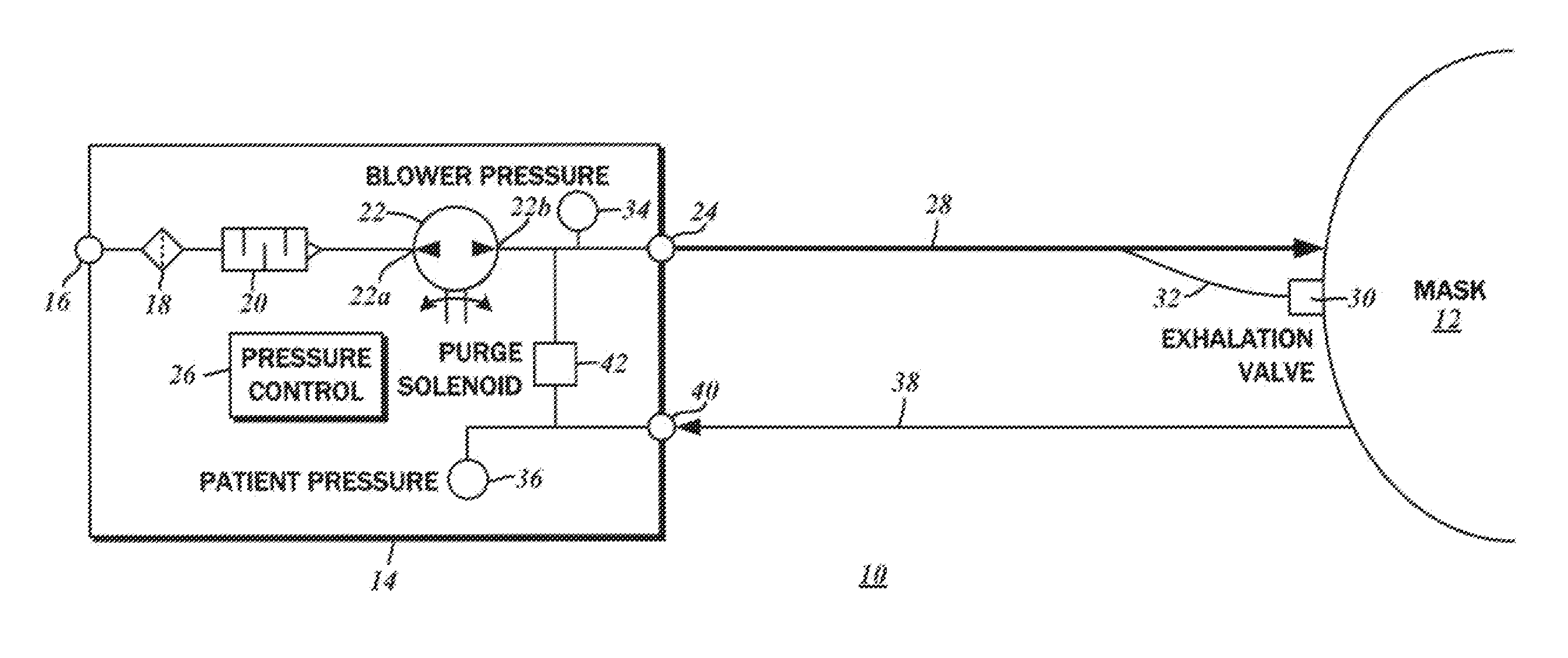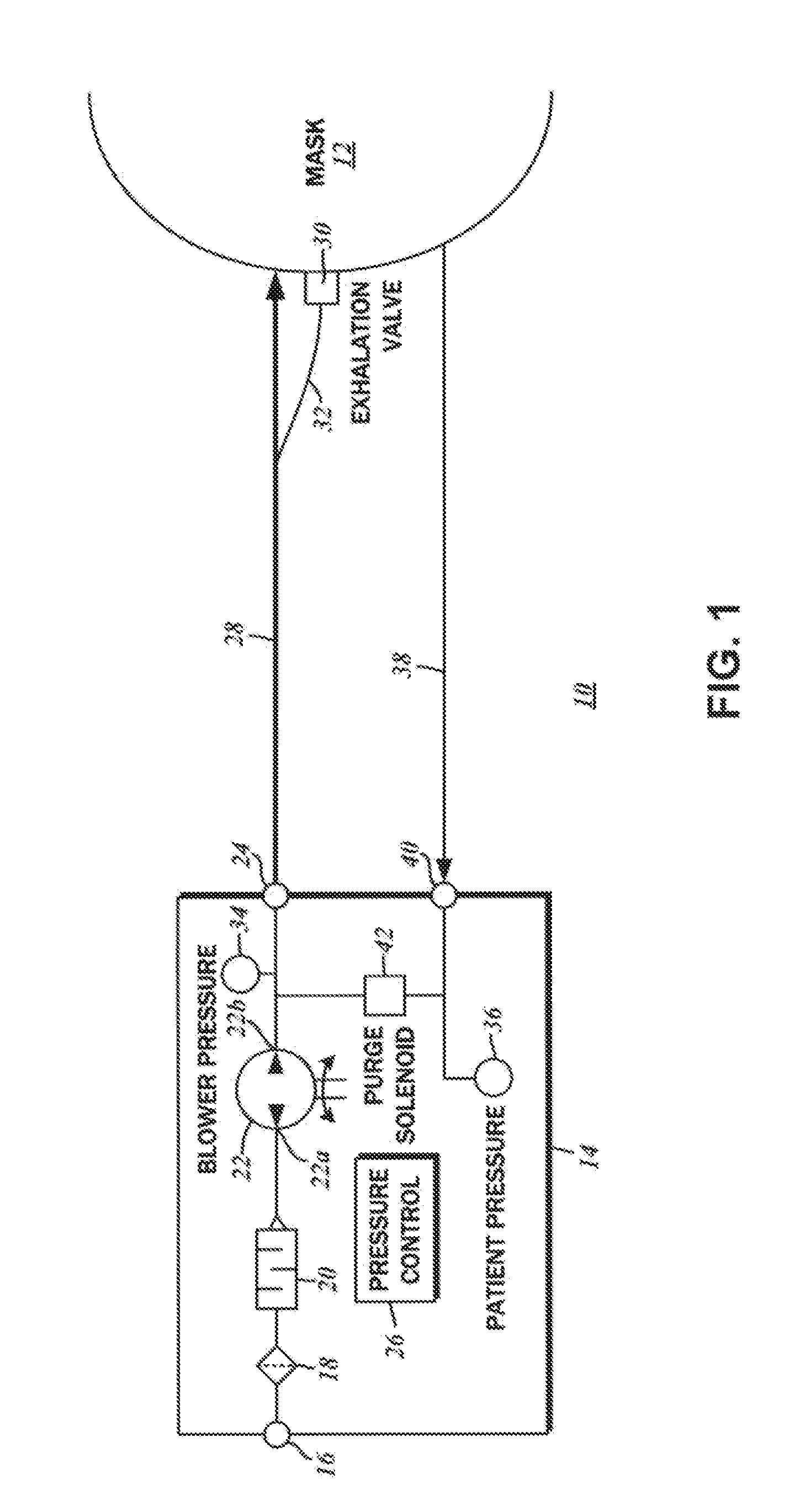Dual pressure sensor continuous positive airway pressure (CPAP) therapy
a positive airway pressure and dual pressure sensor technology, applied in the direction of valves, mechanical equipment, operating means/releasing devices, etc., can solve the problems of reduced blood oxygen saturation, additional discomfort, and patient discomfort, and achieve the effect of reducing mask pressure and reducing the amount of therapeutic airflow
- Summary
- Abstract
- Description
- Claims
- Application Information
AI Technical Summary
Benefits of technology
Problems solved by technology
Method used
Image
Examples
Embodiment Construction
[0028]The detailed description set forth below in connection with the appended drawings is intended as a description of the several presently contemplated embodiments of a system for continuous positive airway pressure (CPAP) therapy. The system delivers breathing gas to a patient for the treatment of obstructive sleep apnea (OSA) and other cardio-pulmonary conditions, and implements various methods for the selective pressure augmentation and relief throughout the breathing cycle. This description is not intended to represent the only form in which the disclosed invention may be developed or utilized. The description sets forth the functions and features in connection with the illustrated embodiments. It is to be understood, however, that the same or equivalent functions may be accomplished by different embodiments that are also intended to be encompassed within the scope of the present disclosure. It is further understood that the use of relational terms such as first and second an...
PUM
 Login to View More
Login to View More Abstract
Description
Claims
Application Information
 Login to View More
Login to View More - R&D
- Intellectual Property
- Life Sciences
- Materials
- Tech Scout
- Unparalleled Data Quality
- Higher Quality Content
- 60% Fewer Hallucinations
Browse by: Latest US Patents, China's latest patents, Technical Efficacy Thesaurus, Application Domain, Technology Topic, Popular Technical Reports.
© 2025 PatSnap. All rights reserved.Legal|Privacy policy|Modern Slavery Act Transparency Statement|Sitemap|About US| Contact US: help@patsnap.com



